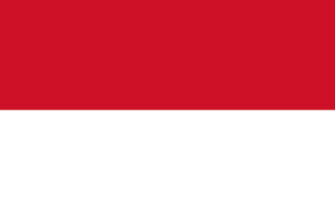Serbia is an amazing country at the crossroads of Europe. Serbia is rich not only in the beauty of its nature, but also in its many revolutionary, historical and political events that originated there, but then drew the whole world into them.
This is what the modern flag of Serbia looks like:

History of the flag
The first surviving information about the flag, comes from the period of the Kingdom of Serbia (1217-1346) under the ruler Stefan Vladislav the First.

By the time the Serbo-Greek kingdom was established (1346-1371), the state already had a different symbol (1339), which partially changed during the empire.

After the death of the last monarch, the country fell under the vassal control of the Ottoman Empire, and from 1459 it was completely under Ottoman rule.

At the beginning of the 19th century, the First and Second Rebellions took place in Serbia one after the other. During this time, the rebels acted under different flags. There are several variations among the surviving species:






The struggle for independence eventually yielded positive results. In 1830 Serbia obtained independent status, and five years later adopted its constitution, in which a place was given to the description of the official symbol.

Other flags were also used during this period:
- A red, blue and white cloth with a coat of arms in the center and three crescents above it;
- a similar cloth with four six-pointed stars.

After 1878, as a result of the Russo-Turkish War, Serbia gained international recognition and soon proclaimed the Kingdom. The state symbol was changed to match the status of the country. In this form it existed until the end of World War I.

In December 1918, a new state was created — the Kingdom of Serbs, Croats and Slovenes, which in 1929 was renamed the Kingdom of Yugoslavia. In both cases the official symbol of the country was the horizontal tricolor.

During the occupation of Yugoslavia, a government of national salvation was established, which had its own symbol.

At the end of World War II, the Federal (later Socialist) People’s Republic of Yugoslavia was formed on this territory, which included the Socialist Republic of Serbia, with its own symbols.

The breakup of Yugoslavia in 1992 led to the union of two states: Serbia and Montenegro, which adopted a version of the 1918-1945 period symbols as their official symbol. The Republic of Serbia separately adopted a different type of flag, swapping the white and red stripes.

The Union of Serbia and Montenegro did not have a long history and in 2004 it collapsed, and Serbia simultaneously proclaimed the creation of a separate state. For this purpose, its symbolism was also changed — the tricolor was covered with the image of the coat of arms.

The modern flag of the country was approved in 2010. It practically repeats the former version with a partial redesign of the appearance of the coat of arms.
Description
The national symbol of Serbia is a rectangular cloth consisting of three equal horizontal stripes:
- The red one is on top;
- Blue is medium;
- The white one is from the bottom.
At a distance of 1/7 of the length of the flag on the side of the flagstaff is written a view of the small coat of arms of Serbia.

The small coat of arms, represented on the symbol, consists of two white eagles with open beaks and looking in opposite directions from each other. They are depicted on a shield of red background, with a crown over their heads. In the central part of the coat of arms is inscribed the Serbian cross, based on the emblem of Byzantium from the 13th century.

The difference is that the symbol «Otsilo» and the cross in the Serbian version is white, while in the Byzantine version it is yellow.

Flag colors
The official symbol of Serbia has three main colors: red, blue and white. In addition to these, additional colors are used to represent the small coat of arms: yellow, black.
Meaning of colors and flag symbol
The colors of the flag used by Serbia are generally considered to be Pan-Slavic colors, although the Netherlands also has the same range of colors. The colors presented mean:
- blue — symbolizes the honesty and chastity of the Serbian people;
- Red — represents the love and courage of the Serbs, who, for the sake of unity and love for their country, fought in all the battles that fell to her hard lot;
- white is a symbol of peace and nobility.
Other Flags
The Republic has developed and uses flags and symbols for various government agencies and institutions. These include:
- Government
- Standard of the President of the country, (the appearance of the cloth has a great resemblance to the standard of King Alexander the First);

- Standard of the President of the National Assembly of the Republic,

- Military
- Serbian Brigade of Ground Forces;

- Air Force Brigade;

- Military Police;

- Serbian Guard;

- The river flotilla of the armed forces of the country;

- Information Security Agency.

- Territorial
The Republic of Serbia has within its borders the Autonomous Province of Vojvodina. Its official symbol is a red and blue cloth with three stars on a blue background.

At the same time, the other official symbol of Vojvodina is also permitted for use.

Along with other symbols, the Orthodox Church of Serbia has its own version of the flag.

Interesting facts about the flag
For public use, a version of the flag without a coat of arms is allowed, which is the official symbol of the Republic of Serbia, which is part of Bosnia and Herzegovina.

General information about Serbia
| Official language | Serbian |
| Capital | Belgrade |
| Territory | 88,407 km² |
| Population | 6,963,764 people |
| Currency | Serbian dinar (RSD, code 941) |
| Phone Code | +381 |










I remember visiting Serbia and seeing the flag everywhere. It was fascinating to learn about its meaning and history. I chatted with locals who proudly shared stories about their culture. The flag really represents their resilience and spirit, which made my trip even more meaningful.
I once spotted the Serbian tricolor at a street fair and asked a local about the coat of arms. They showed me the double-headed eagle and explained flag protocol — small moment, big cultural vibes. —Betty
As a guy named Daniel, I once traveled through Serbia and bought a small flag as a keepsake. It’s cool how the red, blue, and white tell a story about the country’s history and pride. Flags really connect you to places in a unique way!